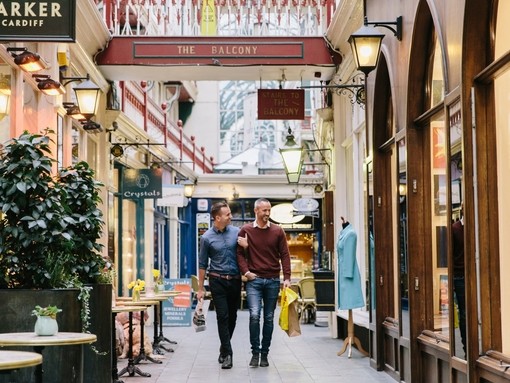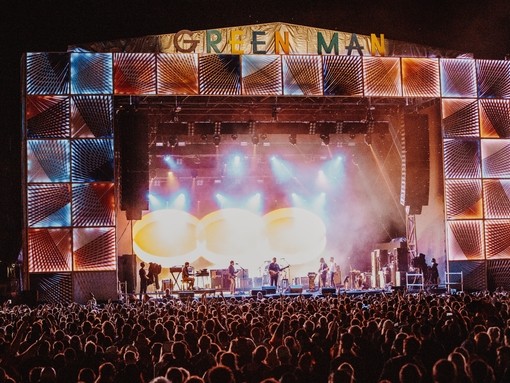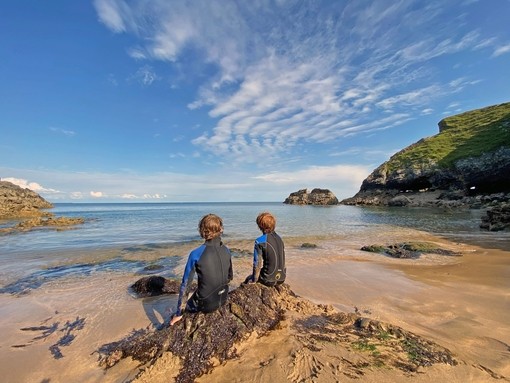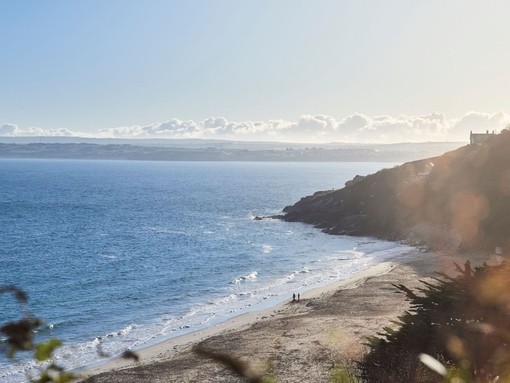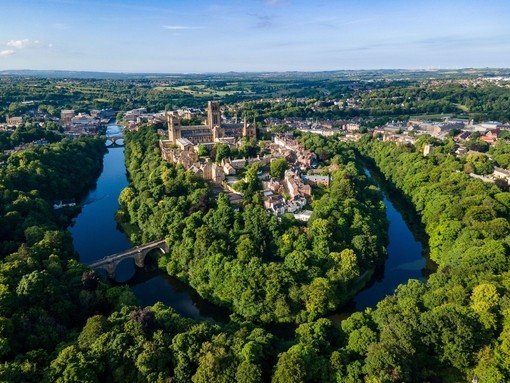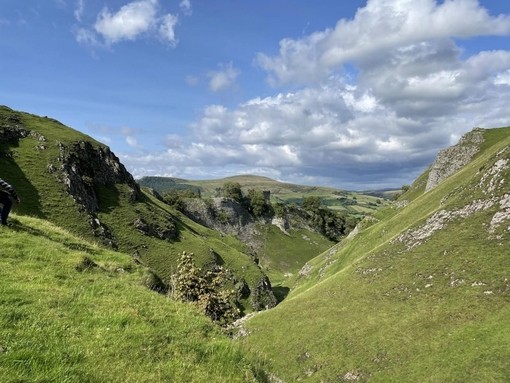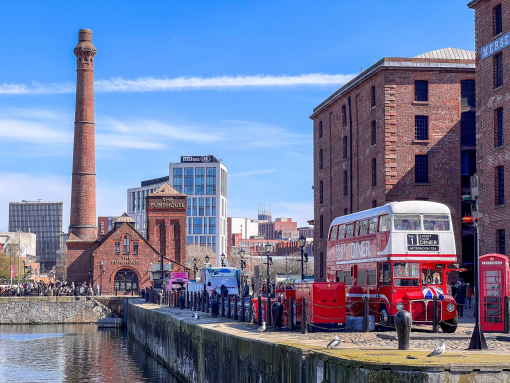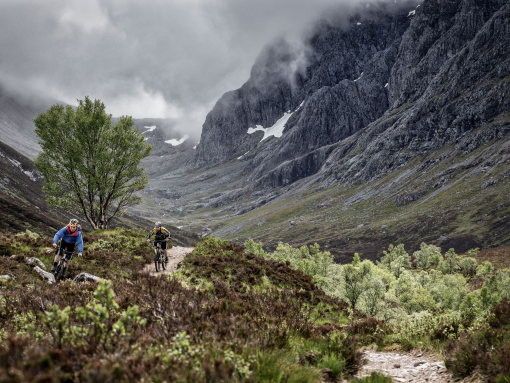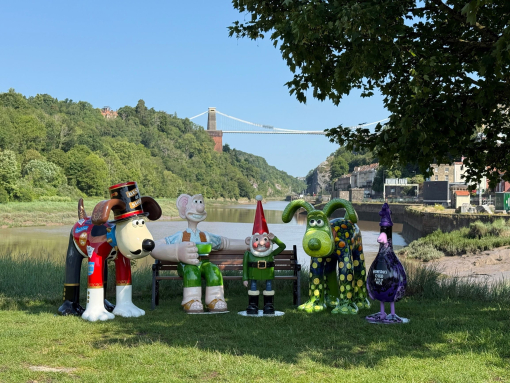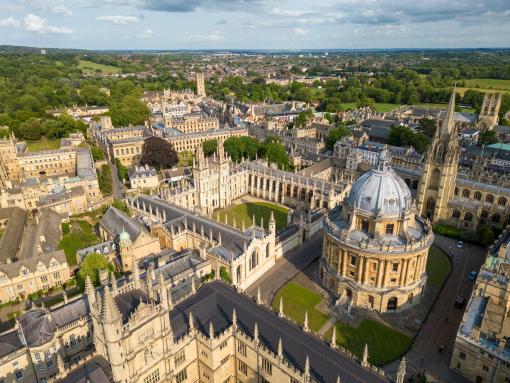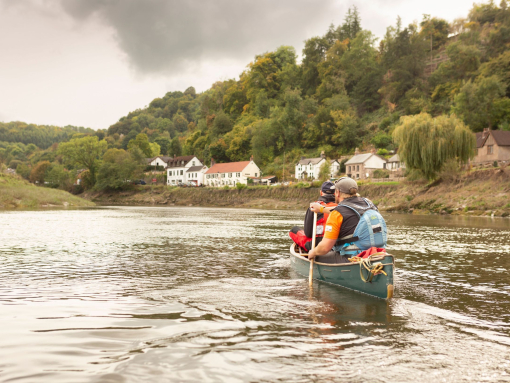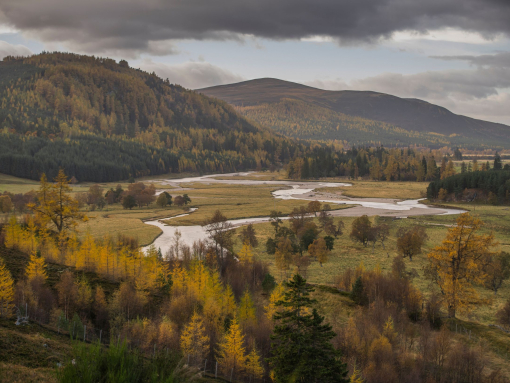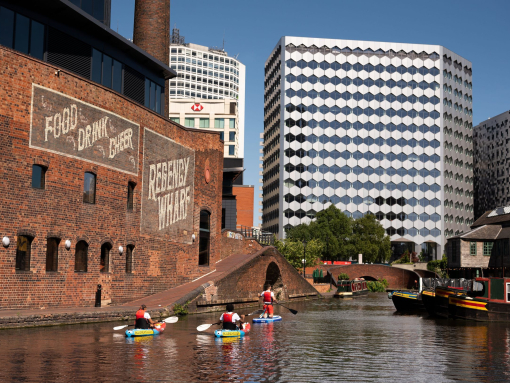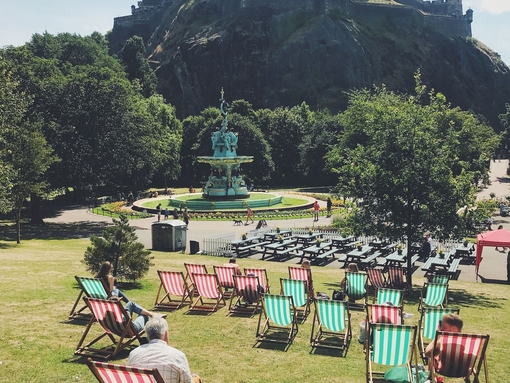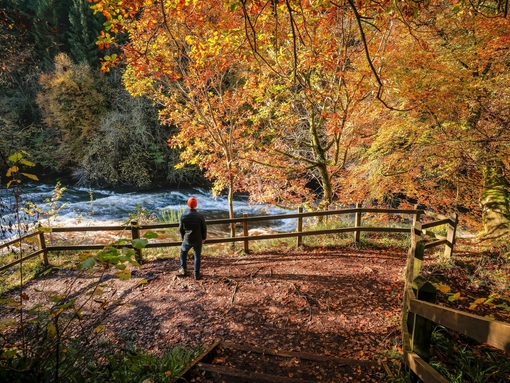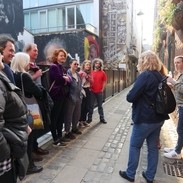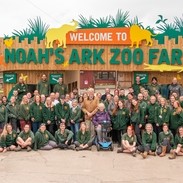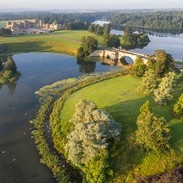Britain’s film and TV by region: south Wales
Photo by: Hawlfraint y Goron/Matt Crighton/Visit Wales
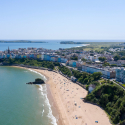
Stop 1 - Cardiff
Photo by: Crown Copyright/Visit Wales
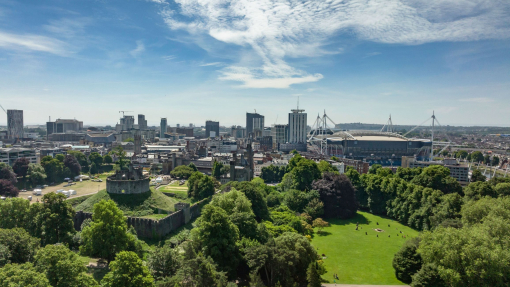
Hensol Castle Distillery
Just outside Cardiff, your clients can find South Wales’ first full-scale gin distillery, visitor experience, gin school and contract bottling plant, all housed in the cellars of the 17th-century Hensol Castle. This ivy-clad gem also appeared in several Doctor Who episodes (e.g. ‘Aliens of London’, ‘World War Three’, and ‘The Sound of Drums’), adding a touch of screen magic to every sip. Clients can take part in immersive distillery tours, where they’ll explore secret cellars, see the distillation process up close, and sample signature gins. For hands-on types, the Gin Making Experience is a highlight: they will craft their own bespoke bottle using a blend of botanicals. There is also a Gin Tasting Experience and Cocktail Masterclasses for those who want to shake things up James Bond style.
Cardiff Castle
Right in the centre of the capital, behind a set of ancient stone walls, lies more than 2,000 years of drama. Originally a Roman fort, Cardiff Castle was later transformed into a Norman stronghold and, in the 19th century, reimagined in Gothic Revival style by architect William Burges. With its richly decorated interiors and imposing towers, the castle is one of Wales’ most striking attractions. No surprise it’s starred in Doctor Who and Sherlock, where its turrets and tunnels were used as a moody backdrop. Your clients can lose themselves in grand halls, secret chambers and sun-drenched gardens, or catch a live gig or film screening on the castle green on selected dates.
Cosmeston Lakes Country Park and Medieval Village
Time travel, anyone? Just a short hop from Cardiff, Cosmeston Lakes Country Park and the adjacent reconstructed medieval village have had more than a moment in the spotlight. The hamlet of Cosmeston played the village of Ealdor in Merlin and popped up in Doctor Who too, thanks to its thatched roofs, timber frames and air of lived-in history. But it’s not just for the screen. Your clients can step into the past with costumed guides, or wander around the park’s lakes, woodland and wildlife-filled meadows. Those who like their history with a side of storytelling can join one of the Ranger Walks and Talks. Led by coastal rangers, they dive into the secrets of the Glamorgan Heritage Coast, Cosmeston Lakes and Porthkerry Country Park.
Principality Stadium
The Principality Stadium is a hub for electric match-day energy, hosting everything from Six Nations rugby to global pop icons. But here’s a plot twist: in the post-apocalyptic horror flick 28 Weeks Later (2007), the stadium doubled as a quarantine centre, showing off its cavernous interior in a rather eerie light. These days, it’s more thrills than chills, especially with SCALE - a heart-pounding rooftop climb that can end with THE ZIP, a zipline ride right across the pitch, or THE DROP, a 30-metre abseil from the viewing platform which beats taking the stairs.
BBC Studio Tours, Central Square
Step into the beating heart of Welsh broadcasting at BBC Cymru Wales. This 90-minute guided tour gives clients exclusive access to TV galleries, and one of the largest BBC newsrooms, packed with cutting-edge technology. Your clients can see where Doctor Who is made, try their hand at presenting the weather, experience what it’s like in a radio drama studio, and get a behind-the-scenes look at the technology that powers live TV and radio.
Wales Millennium Centre
The Wales Millennium Centre, a striking arts complex in Cardiff Bay, is known for its unique architecture, including a large inscription in Welsh and English on the building’s facade. Opened in 2004, it hosts various performing arts events, from opera to musical theatre, and has featured prominently in Doctor Who.Eagle-eyed fans may recognise the building from the ‘New Earth’ episode in series two, where it is transformed into a futuristic complex.
Penarth
Penarth, a picturesque seaside town on the outskirts of Cardiff, starred in Sex Education. Its charm lies in its elegant Victorian architecture, manicured esplanade gardens, and panoramic views across the Bristol Channel. The Paget Rooms (now a hire venue) acted as the hall for Moordale High in seasons one and two. Filming also occurred on the town’s Victorian pier, with the local Angling Club transformed into a ticket office for season three. Your clients can enjoy a leisurely stroll along the waterfront, dine at charming cafes and take in views of the Bristol Channel.
Castell Coch
Castell Coch, or ‘Red Castle’, is a 19th-century Gothic Revival castle nestled in the woodlands of Tongwynlais, just outside Cardiff. Designed by architect William Burges for the third Marquess of Bute, it features soaring turrets, intricate interiors and richly painted walls that give it an enchanting, fairytale-like appearance. Though originally built on the foundations of a much older medieval fort, Castell Coch was recreated in Victorian times to serve as a romanticised retreat for the rich and powerful. Its unique charm has made it a popular filming location, including for several episodes of Doctor Who (‘Last of the Time Lords’ and ‘Nightmare in Silver’).
St Fagans National Museum of History
Located just outside Cardiff, the St Fagans National Museum of History showcases Wales’ rich cultural heritage through an award-winning open-air collection of historic buildings and exhibitions. With immersive displays, the museum also served as a filming location for Sex Education, with the Coach and Orchard Car Park doubling as Cavendish College (season four). Your clients can wander through beautifully reconstructed period buildings and enjoy interactive exhibits, while the museum also hosts regular events, from ghost tours to pub quizzes, at its newly restored Victorian Vulcan Pub.
Getting around:
Getting around: The nearest major international airport is Cardiff Airport. From there, take a taxi (around 30 minutes), or a shuttle bus to Rhoose train station and then catch a direct train into Cardiff Central. Reaching the Brecon Beacons (Bannau Brycheiniog) from Cardiff is easy and scenic. By car, it’s around an hour’s drive north. Prefer public transport? Catch a train to Merthyr Tydfil or Abergavenny, then hop on a local bus or taxi into the National Park.
Stop 2 - Brecon Beacons (Bannau Brycheiniog)
Photo by: Ellesmere Riding Centre/Andy Shenstone
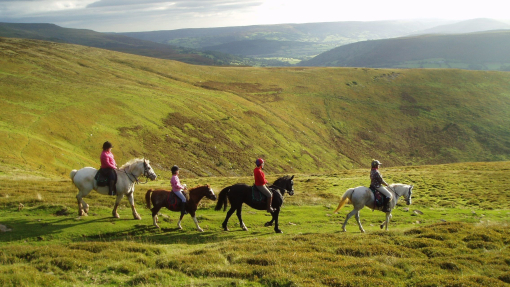
Brecon
The gateway to the Brecon Beacons (Bannau Brycheiniog) National Park, this market town oozes charm, culture and cinematic appeal. Wander cobbled streets lined with Georgian townhouses and Victorian shopfronts that could pass for a period drama set. Brecon is the home of the Royal Welsh Regimental Museum, packed with artefacts and heroic tales. This extensive collection traces more than 300 years of military history, showcasing medals, weaponry, uniforms, and the story of the Zulu War engagement at Rorke’s Drift. Or pause to admire the architecture of Brecon Cathedral, with its roots going back to the 11th century. If your clients are walkers or just lovers of the outdoors, Brecon makes a great launchpad for hikes up Pen y Fan – the highest peak in southern Britain. Y Gaer, a new arts and community hub, also boasts a programme of exhibitions, performances and workshops that showcase local talent.
National Showcaves Centre for Wales
Time to introduce your clients to one of Europe’s largest cave systems - at the National Showcaves Centre for Wales. This is where Doctor Who filmed numerous eerie and atmospheric scenes, using the vast caverns and waterfalls to otherworldly effect. But this isn’t just a film set, it’s an immersive journey through geology and history. Your clients can explore three caves, including Cathedral Cave with its soaring chambers and subterranean waterfalls. Above ground, families can come face to face with more than 200 life-sized dinosaur models dotted throughout the Dinosaur Park – look out for the towering T-Rex and a triceratops in the trees. Stop off to discover the fossil collection, museum and Iron Age village, before a visit to the shire horse centre.
The Walnut Tree, near Abergavenny
Don’t be fooled by the rural setting – this country pub holds a Michelin star and a foodie legacy that dates back to the 1960s. Under the expert eye of veteran chef Shaun Hill, The Walnut Tree serves dishes made with top-quality Welsh ingredients including local beef and game, alongside British seafood. The à la carte menu and set menus change every day for lunch and dinner, depending on availability of ingredients, especially fish and shellfish. The restaurant’s vibe is relaxed, but as the food is the star of the show, advance booking is essential. And if your clients are not ready to head home after dinner, there’s an on-site cottage offering cosy, self-contained accommodation just steps from the table.
Penderyn Distillery
One of Wales’ most famous whiskies comes from the foothills of the Brecon Beacons (Bannau Brycheiniog), where natural spring water is used for age-old distilling craft. At Penderyn’s original distillery, visitors can tour the stillhouse, learn about the distillation process, and sample award-winning single malts – including limited editions. The visitor centre includes a shop stocked with whisky, gin and merchandise, plus interactive displays that reveal how this once-small operation put Welsh whisky back on the global map.
Stargazing at the Observatory
At the heart of Wales’ first International Dark Sky Reserve, this two-hour observatory-led stargazing experience gives clients a front-row seat to the cosmos. Run by expert astronomers, these group stargazing events come with high-powered telescopes, constellation tours, and cosmic storytelling. On a clear night, planets, meteor showers, and even the Milky Way can all be visible with the naked eye.
Zip World Tower
High adrenaline meets industrial heritage at Zip World Tower, where the former Tower Colliery has been reimagined as a playground for thrill-seekers. Phoenix, the world’s fastest seated zip line, is the star of the show – soaring across the old mining site at speeds of up to 70mph (112 km/h). But that’s just the beginning. There’s also the Tower Coaster, a gravity-defying ride that darts down one kilometre of twisting track, following the contours of the historic site.
getting around
Getting around: The drive from the Brecon Beacons (Bannau Brycheiniog) to the Gower Peninsula takes about one-and-a-half to two hours, depending on the starting point. There’s no direct train route, but clients can take a train from Abergavenny or Merthyr Tydfil to Swansea, then hop on a local bus or taxi into the Gower.
Stop 3 - Gower
Photo by: VisitBritain/Storyman
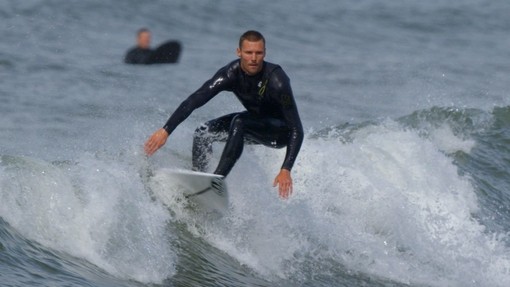
National Waterfront Museum, Swansea
Explore the industrial heritage of Wales at the National Waterfront Museum. Nestled in a striking slate-and-glass building beside the marina, this museum boasts more than 15 interactive galleries that showcase more than 300 years of innovation in mining, metal manufacturing and transport. Your clients can ride a virtual steam locomotive, tinker on touchscreens, and track Swansea’s global impact – like how copper from nearby smelters once clad Royal Navy ships. And it doesn’t stop there: there’s also a live jazz festival (5 to 7 September 2025), robot-building for kids, and vintage markets – plus a café with waterfront views and a shop full of quirky souvenirs.
RipNRock Coasteering, Worm’s Head
Wetsuits on, nerves off. Coasteering with RipNRock is a thrilling way to explore one of Wales’ most cinematic shorelines – Worm’s Head, a tidal island often seen in Doctor Who. This guided adventure blends cliff jumping, wild swimming, rock scrambling and sea-cave exploration, all with expert instructors and safety gear. Expect to leap into foaming plunge pools and scale barnacle-covered rocks, with the Gower scenery as the backdrop. This experience is suitable for beginners and experienced daredevils alike.
Plantasia
Looking for jungle vibes? Step into Plantasia, Swansea’s rainforest-in-a-pyramid. This fully immersive tropical zoo is home to more than 40 animal species – from leafcutter ants and poison dart frogs to crocodiles, meerkats and a sloth. Winding pathways lead through climate-controlled rainforest and arid desert habitats, all under one glass roof. Part conservation hub, part indoor adventure, your clients can get hands-on with animal encounters, reptile handling and behind-the-scenes zookeeper experiences.
Three Cliffs Bay
Windswept, wild and cinematic – this stretch of Gower coastline has starred in The Witcher, but it’s even better to see it in real life. Walk the cliff-top trails for epic views, then descend through dunes and ancient woodland to the beach, where a tidal river cuts through the sand like something from a fantasy novel. For thrill seekers, Gower Adventures runs guided rock-climbing on the limestone cliffs overhead. Your clients can stay at Three Cliffs Bay Holiday Park for glamping with sea views or book a cosy cottage in nearby Parkmill. Refuel at the Gower Heritage Centre Café with a hearty Welsh rarebit or afternoon tea.
Rhossili Bay
Regularly named as one of Europe’s best beaches by major travel publishers, and featured in Doctor Who and Torchwood, Rhossili Bay offers a mix of golden sand and towering cliffs. At low tide, your clients can walk to the Worm’s Head peninsula, a dragon-shaped tidal island. Adventurers can hike the clifftop trails and try to spot seals and dolphins. Watch the sunset from one of the holiday lodges at Hillend Campsite nestled among the dunes. Refuel at The Bay Bistro, which serves up hearty meals with a view that’s hard to beat.
getting around
Getting around: By car, the journey from the Gower Peninsula to Pembrokeshire takes around two to three hours. For public transport, take a train from Swansea to Haverfordwest, Tenby or Pembroke Dock (around two to three hours). From there, local buses or taxis connect to coastal towns and rural highlights.
Stop 4 - Pembrokeshire
Photo by: Hawlfraint y Goron/Matt Crighton/Visit Wales
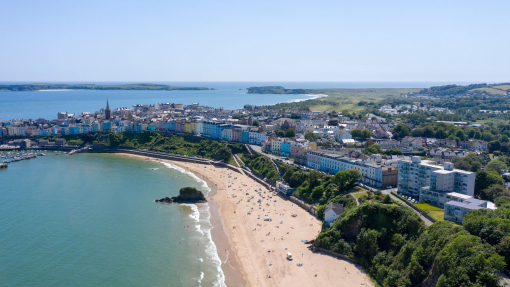
Tenby
With pastel-coloured Georgian houses, medieval town walls, and a working harbour, Tenby looks like it’s been plucked straight from a storybook – which might by why Doctor Who filmed here. This walled seaside town is full of character, with narrow lanes hiding independent shops, cafes and art galleries for your clients to explore. Discover the 13th-century castle ruins, find out more about the history of the town during a guided walk, or relax on one of its four beaches. For a cinematic escape, jump aboard a boat to Caldey Island – home to Cistercian monks, ancient woodlands and postcard-perfect sea views.
St Catherine’s Island
Rising from the sea just off Tenby’s shore, St Catherine’s Island houses a Napoleonic fortress which has starred in Sherlock and plenty of brooding dramas. Accessible only when the tide is low, climb the steep paths to explore abandoned gun rooms and echoing chambers or simply take in the panoramic views over Carmarthen Bay. The fort’s tours reveal its colourful history, from Napoleonic fears to private ownership and screen fame. Curious seals and seabirds often put on a show here too.
St Govan’s Chapel
Built into a limestone cliff, this 6th-century hermit’s chapel, which featured in His Dark Materials, is one of Wales’ best-kept secrets. Built into a cleft in the rock, St Govan’s Chapel is thought to mark the hermitage of Saint Govan – a monk who, legend says, was saved from pirates by the cliff itself opening to conceal him. With no roof and barely room for a handful of visitors, it’s reachable via 52 steep stone steps (which legend insists count differently up and down).
Pembrokeshire Coast Path National Trail
Stretching 186 miles (300km) from St Dogmaels to Amroth, the Pembrokeshire Coast Path National Trail trail snakes along some of Britain’s most dramatic and cinematic coastline. Along the way, your clients will find blue-flag beaches, puffin colonies and Iron Age forts. Choose a manageable section and pair it with a sea kayaking session offered by The Real Adventure Comany, or a Pembrokeshire Islands boat trip to Ramsey or Skomer Island - home to rugged sea cliffs, Atlantic grey seals, and puffin colonies in spring and summer. For something different, try a coastal foraging course with experts like Forage Pembrokeshire.
Pembroke Castle, Pembroke
Towering over the River Cleddau, Pembroke Castle is one of Wales’ best-preserved medieval fortresses. Built in 1093 and the birthplace of King Henry VII – the founder of the Tudor dynasty – it’s steeped in royal drama and military history. Its grounds and labyrinthine tunnels have also doubled as a film set for Me Before You. Your clients can climb the 24-metre high Great Keep, explore the vast underground cave of Wogan’s Cavern, or attend one of the regular historical reenactments and falconry displays. There’s also a café on site, scenic riverside walks, and a shop.
Pembroke Dock Heritage Centre
Housed in a Victorian gun tower, the Pembroke Dock Heritage Centre takes your clients through more than two centuries of maritime, military, and aviation history – including the town’s role as a major shipbuilding and Royal Air Force (RAF) base. More recently, it was the birthplace of the Resistance fleet for Star Wars: The Rise of Skywalker, which was built there. Once the world’s largest flying boat station, it was a vital base for RAF Sunderland patrols during WWII. Today, its galleries cover everything from shipbuilding to wartime secrets. The centre’s Star Wars exhibition peeks behind the scenes of the site’s intergalactic cameo, complete with props and insider stories.
getting around
Getting around: Pembrokeshire is well connected by road, but its coastal beauty is best explored on foot. The Pembrokeshire Coast Path links many of the region’s highlights for walkers, while local bus services like the coastal buses run seasonal routes to remote beaches and villages. For flexibility, car hire is one of the bets options. Bike hire is also popular for exploring quieter lanes and the scenic countryside – with companies like Pembrokeshire Bike Hire offering bike hire via delivery service.

